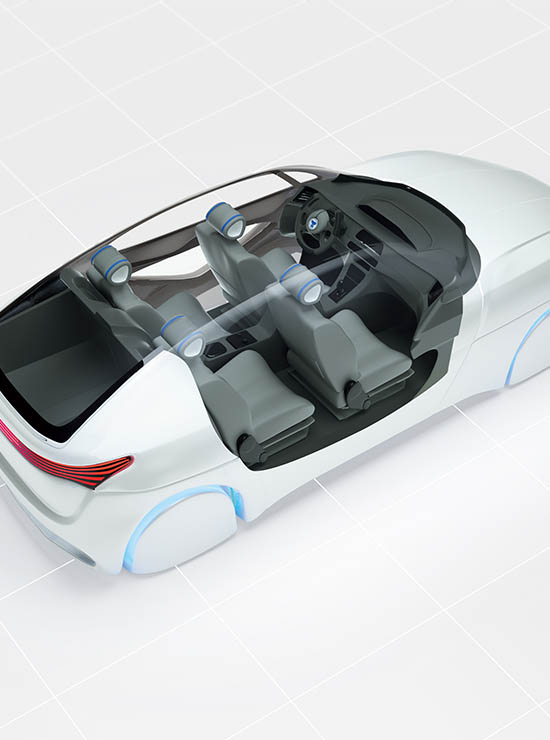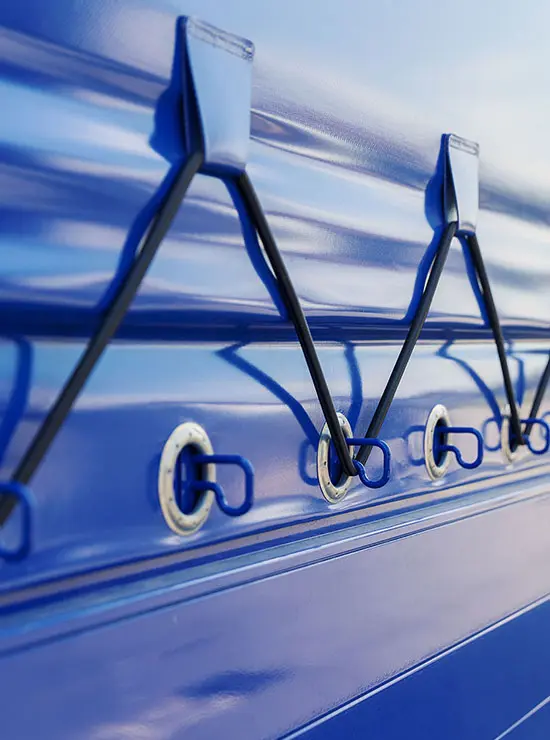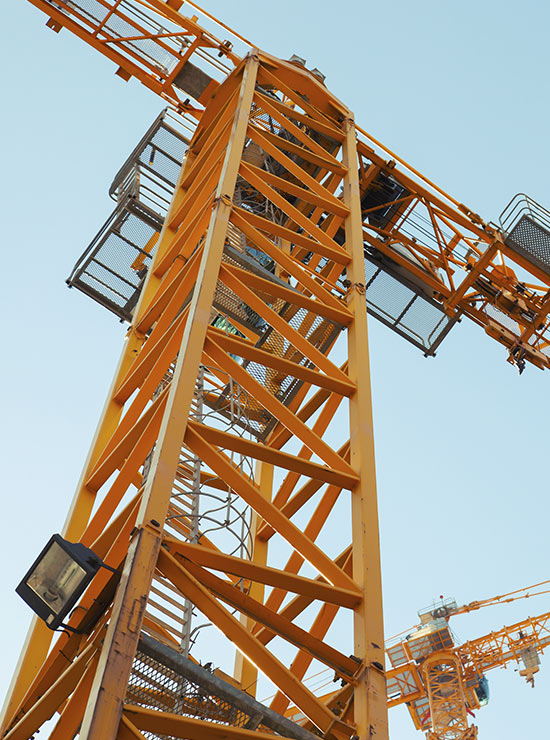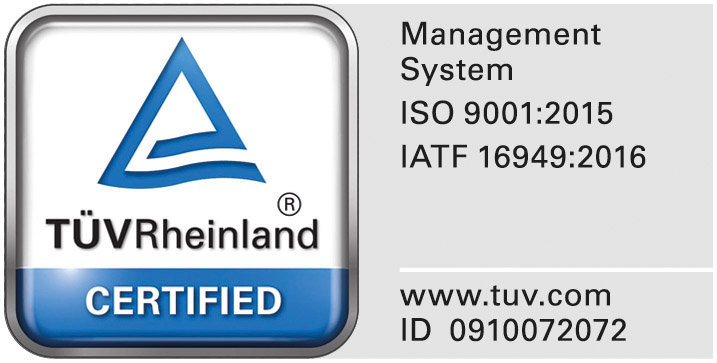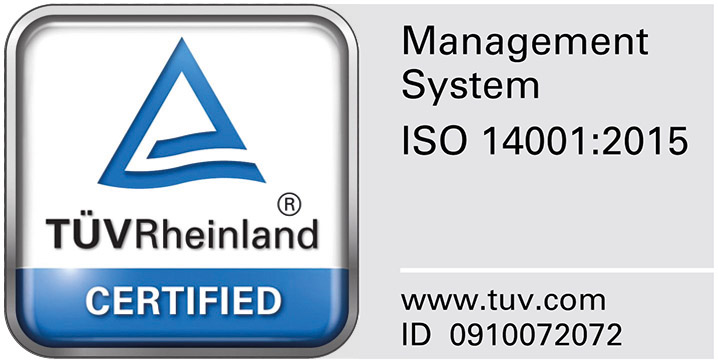TEXTILE TECHNOLOGY I
2020-06-08
Weaving, braiding, machine knitting and felting
Three bundles of fibres extracted from coniferous tree bark, braided to form a kind of cord – the oldest textile-technology product to date is about 40,000 years old. The textile fragment was recently discovered in the south of France and proves that humans have surrounded themselves with textile-technology products since the beginning. And until the present day.
Elementary: Manufacturing method
In applications where we use textiles not so much for fashion and decorative purposes, but instead because of their technical and functional properties, we speak of technical textiles.
In vehicle construction, space technology, sports articles, road construction, medical products – textiles or textile composites can be found wherever you look.
The elementary distinguishing feature of technical textiles is to the production technology used. In textile products, the raw materials are joined together by weaving, braiding, knitting or felting. Natural or synthetic fibres often form the material basis, but leather or metallic yarns can also be processed in the same way.
Weaving
During weaving, a flat textile is created from two thread systems crossing each other at a 90° angle: warp and weft. The warp threads run in the longitudinal direction of the woven textile, the weft threads in transverse direction. In most cases, weaving is relatively dense so that a closed textile appearance is achieved.
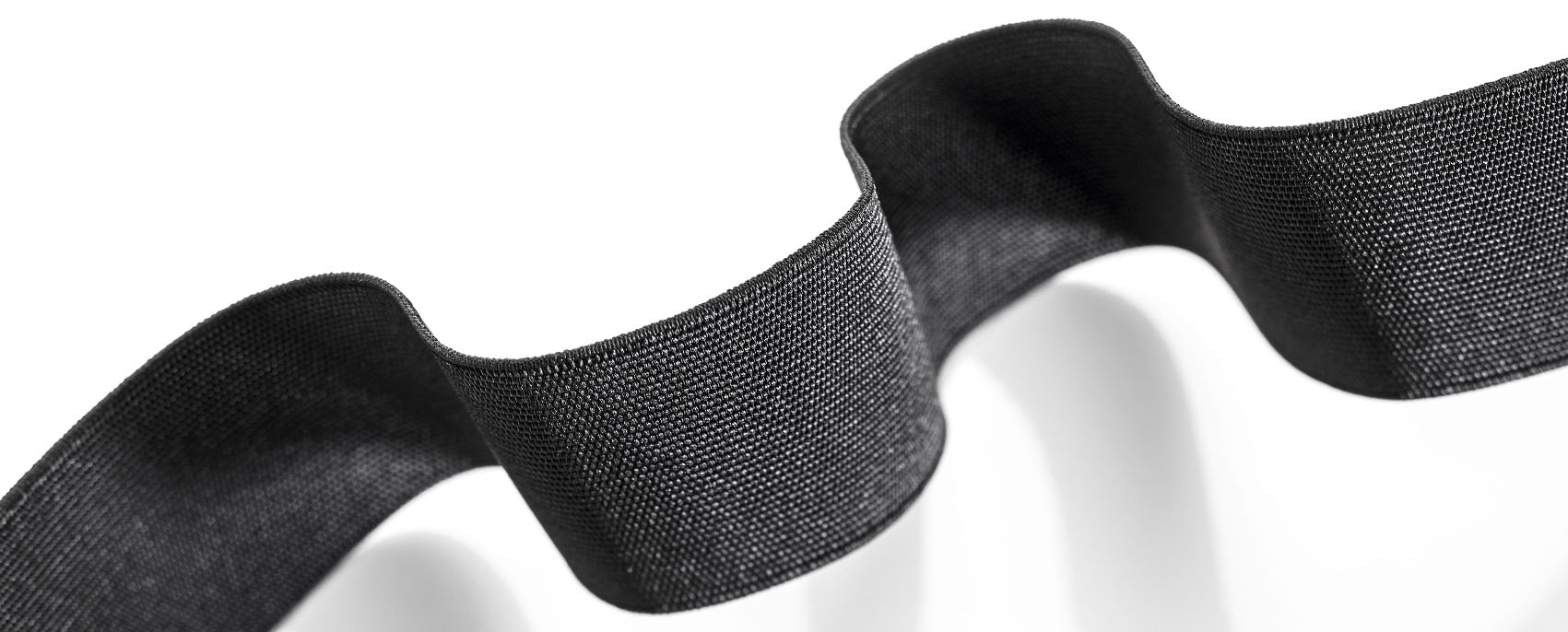
Elastic woven tape made of polyester and elastane
The following, and others, are decisive for the function and quality of a woven textile
- Material
- Thread type, e.g., fineness
- Thickness of woven material, i.e., the distance between the topside and underside
- Thread density, i.e., the number warp and weft threads per unit of length
- Weaving technique, e.g., shuttle or gripper, projectile, air, water and needle weaving technology
- Type of weave, i.e., plain weave, twill weave or satin weave (basic weaves) and – depending on the intended use – a large number of other weaves derived from them
- Woven material width and length
- Weight
- Elastic/non-elastic
- Strength and elongation properties
- Colour
Braiding
During braiding, several strands of the fibre material are intertwined in a regular manner. Unlike in weaving, the threads are not laid at right angles to each other. This results in round braids such as cords, ropes, laces, etc., flat products such as braids, mats or entire suspension bridges and three-dimensional braids such as baskets or hats.
The materials are as diverse as the braided products. Natural fibres, synthetic fibres, bast, leather, steel cables … Anything that is flexible can be braided.
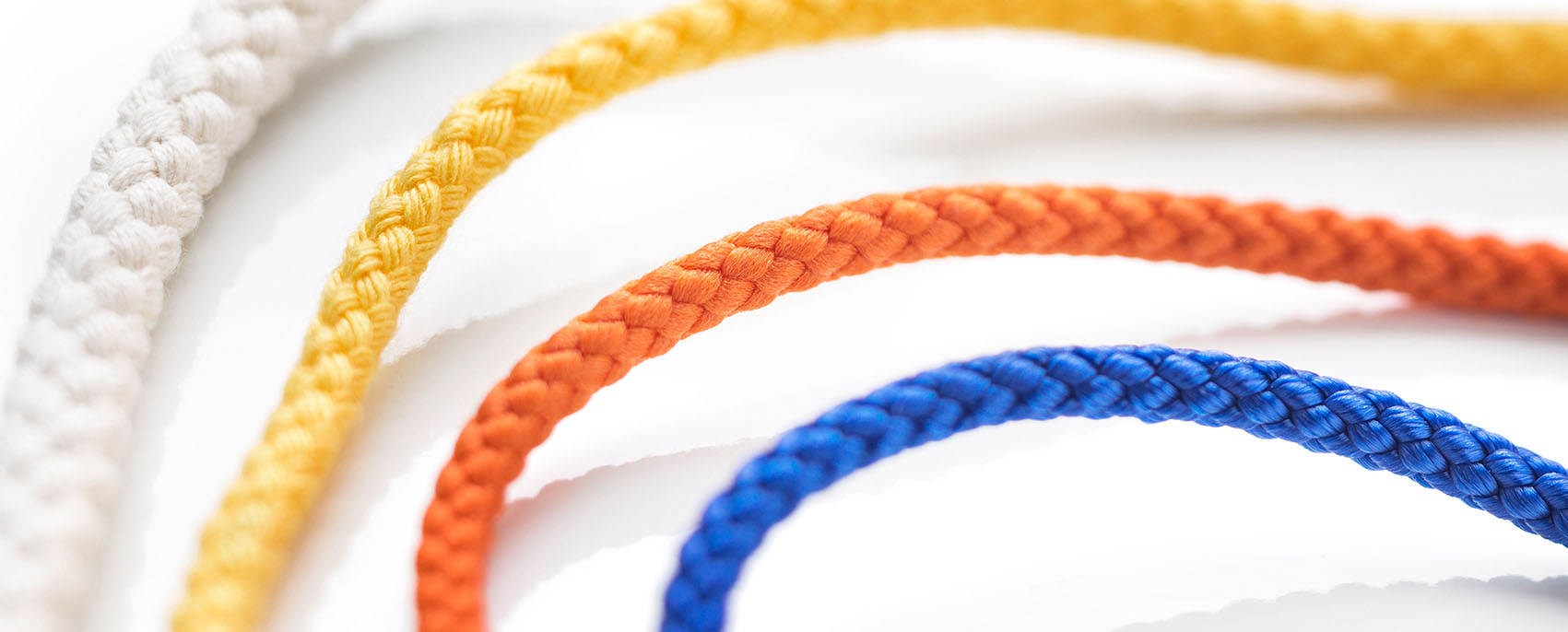
Braided polypropylene cords
The following, and others, are decisive for the function and quality of a braid:
- Material
- Thread type, e.g., fineness
- Braiding technique, round and flat braids with and without a core
- Braiding width and length
- Weave technique, i.e., single-plait, double-plait or bobbin lace
- Thickness and diameter
- Braiding density
- Braiding angle
- Weight
- Elastic/non-elastic
- Strength and elongation properties
- Colour
Machine Knitting
Like knitted and crocheted textiles, machine-knitted textiles are knitted goods: during machine knitting, loops of thread are intermeshed. This is how machine-knitted textiles and nets are produced. Machine-knitted textiles are characterised by their elasticity. This is accompanied by lower dimensional stability. Machine-knitted textiles are therefore used in the production of nets, among other things.
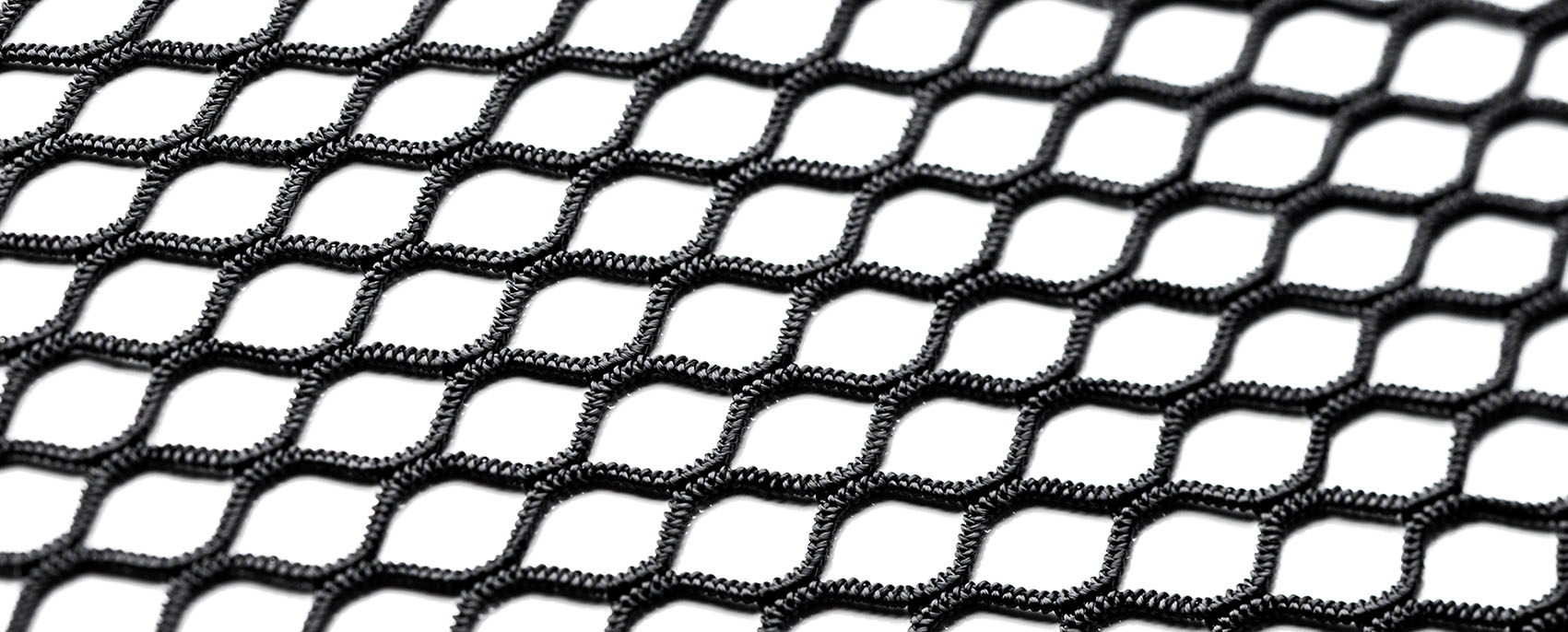
Machine-knitted polyamide honeycomb net
The following, and others, are decisive for the function and quality of a Machine knitted textile:
- Material
- Thread type, e.g., fineness
- Knitting technology, i.e., flat or round knitting, weft-knitted goods (knitting) or warp-knitted goods (crocheting)
- Width and length of knitted material
Felt in Machine Knitting
During felting, the fibres of the original material are intertwined in a non-ordered manner (matted) by mechanical processing. In wet felting by fulling, in dry felting by needling. The result is dense, absorbent flat textiles which are used for protection and insulation.
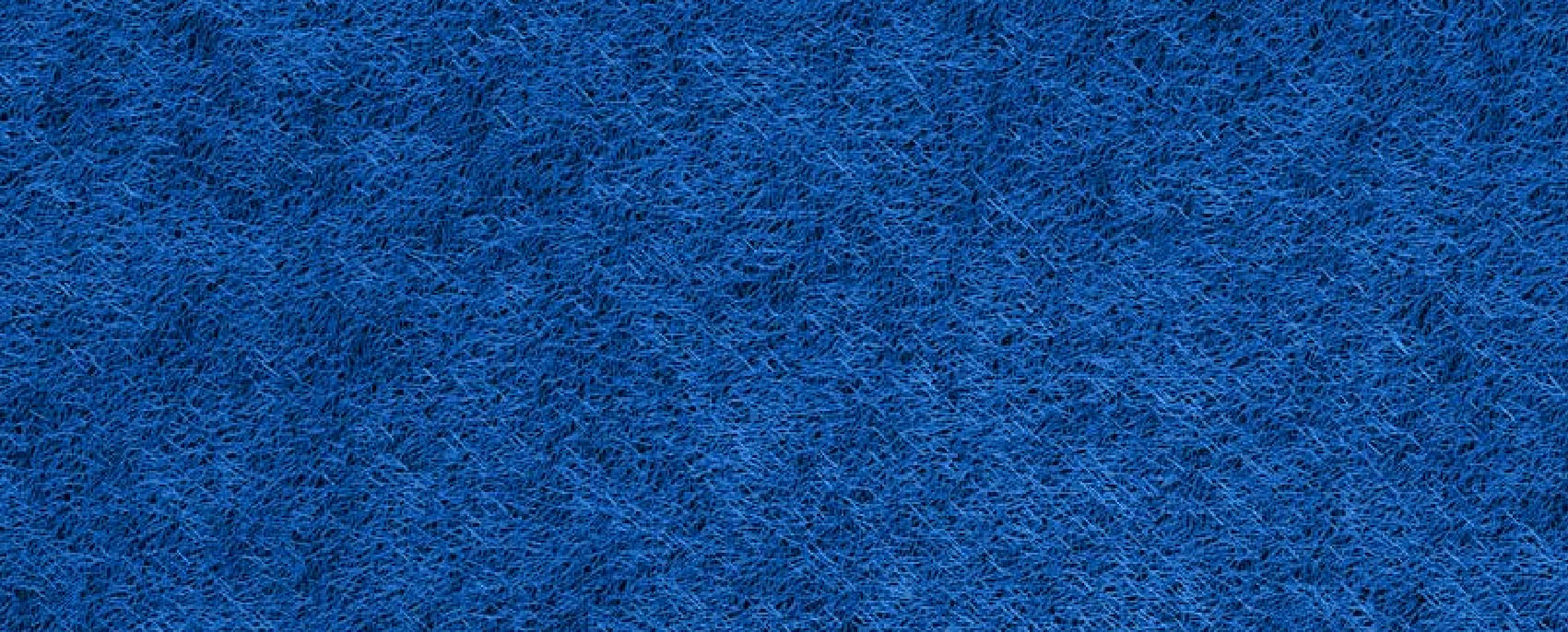
Blue felt
Specialist for Elastics
As a specialist for elastics, we focus at JUMBO-Textil on the production of woven, braided and machine-knitted narrow textiles made of high-tech materials. Besides offering a wide range of standard solutions we develop and produce tailor-made technical textiles and textile components. For numerous industries and a wide variety of applications:
- Automotive
- Aviation
- Mobility
- Metals industry
- Plastics
- Chemicals
- Construction
- Electrical
- Agriculture
- Rehab
- Sports
- Leisure
- PPE
- Safety systems
- Medical technology
- Toys industry
- and much more
- Automotive
- Aviation
- Mobility
- Metals industry
- Plastics
- Chemicals
- Construction
- Electrical
- Agriculture
- Rehab
- Sports
- Leisure
- PPE
- Safety systems
- Medical technology
- Toys industry
- and much more
Photos: JUMBO-Textil


